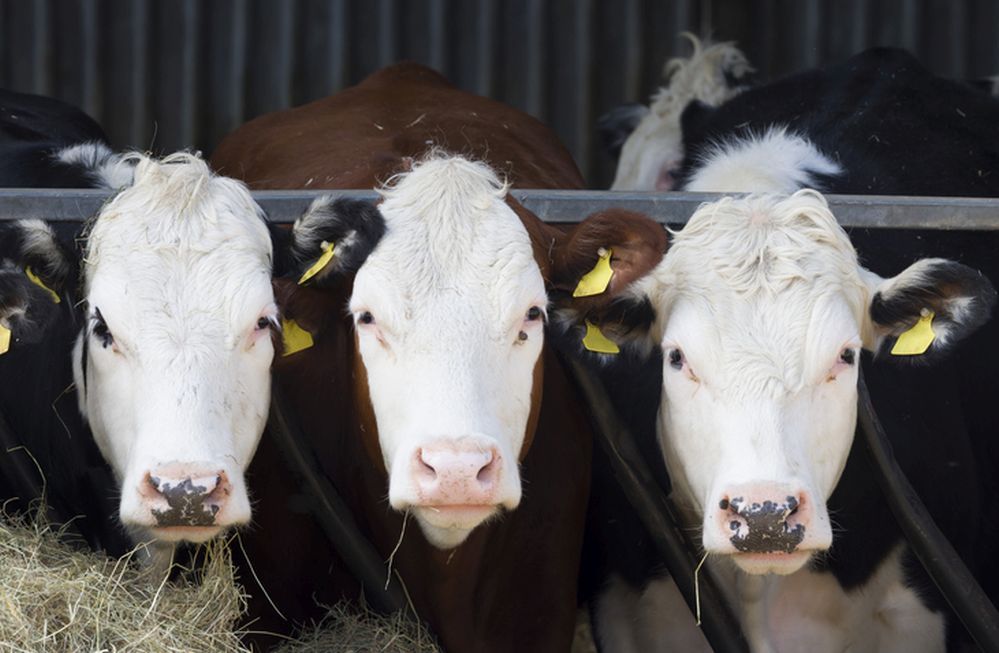Multiple strategies are being explored to address methane emissions from belching livestock from cattle breeding programs and feed additives to editing the genes of the microbes in the rumen. But by far the most cost-effective way to tackle the problem at scale within a reasonable timeframe is a vaccine, claims Massachusetts-based startup ArkeaBio.
“Livestock methane reduction is a challenging space,” CEO Dr. Colin South tells AgFunderNews. “You’ve got technology risk, you’ve got to get your product to farmers, you’ve got to monetize it, and you’ve got to get regulatory approvals, which makes any solution a tough call for venture investors.
“But a vaccine has rightly been called the holy grail in methane mitigation, because if you can execute properly, it will be the lowest cost and the easiest to scale quickly,” says South, who says ArkeaBio has thus far raised $38.5 million from investors including Breakthrough Energy Ventures and Rabo Ventures.
“We’re talking about milligram quantities [per dose], there is already animal vaccine manufacturing capacity out there and distribution channels already exist to essentially all of the world’s 1.2 billion or 1.5 billion cattle.”
In contrast, he claims, scaling up the production of millions of tons of red seaweed (Asparagopsis), which has been shown to have powerful methane reduction effects, is a vast technical and logistical undertaking that will take years.
“When you just think about the logistics of what we’re doing to get to 1.5 billion animals, or 1.2 billion animals, the amount of antigen we need would all fit in a single 20-foot container. Whereas, if you’re doing it with seaweed, you have to establish an entire supply chain, growing, manufacturing and distributing 5-10 million tons of seaweed worldwide, and getting it in the hands of farmers who need to feed it to animals on a daily basis. It’s a completely different logistical challenge.”
He added: “Our focus is on cattle as they are by far the dominant source of enteric methane, but we expect the vaccine will be very similar across species as rumen microbiome studies have show a high degree of conservation in the predominant methanogens.”
“A vaccine has rightly been called the holy grail in livestock methane mitigation.” Colin South, CEO, ArkeaBio

Mode of action and efficacy
So how does ArkeaBio’s proposed vaccine work, and how efficacious is it?
A potent greenhouse gas, methane is generated on farms both from manure and burping ruminants such as cows and sheep in a stomach compartment called the rumen. Here, microbes break down complex carbs to produce carbon dioxide and hydrogen, which are then converted into methane by another set of microbes (methanogens) and belched out.
According to South, a former Zymergen exec who took the helm at ArkeaBio (founded in 2021) in January 2022, the vaccine prompts a cow’s immune system to produce antibodies that interfere with the second set of microbes: methanogens.
It doesn’t completely neutralize all of them, says South, but it has so far been shown to upset them sufficiently to cause a 10-15% reduction in methane emissions for a couple of months, numbers ArkeaBio is very confident of increasing as its work progresses.
In a nutshell, says South, the immune response [to the vaccine] generates antibodies in the blood and in the saliva of cows, “which are saliva-generating machines, so those antibodies get down into the gut. In terms of the level of inhibition we’re seeing, we’re still at the early stages, so we’re certainly not at the level of some of the bromoform-based systems like seaweeds or 3-NOP [dsm-firmenich’s Bovaer feed supplement], but we have a completely different cost model.”
He adds: “We don’t have a minimum viable product yet, which would be a 15-20% reduction in methane that lasts for 3-6 months, but we’re certainly on that track. We can see that there’s a good path to a viable solution with vaccines, which is very exciting; we think it can be a true game changer for greenhouse gas mitigation on farm.”
While a 10-15% reduction may not sound like much (Bovaer promises a 30% reduction in lactating dairy cattle, while some seaweed companies claim reductions of up to 90%), this is just the beginning, says South, who notes that the key difference is that the effects of a vaccine are sustained.
“We’re exceptionally happy with what we’ve seen so far because this is very early days, we only got in the lab last March. We have multiple targets [in the methanogens], and we can stack different approaches in the vaccine so that we’re attacking different functions of the cell. Also, we haven’t even really started to optimize the formulation, so there’s adjuvants, modes of vaccination, the timing between the prime and the boost [that can further drive efficacy].”
‘Our sweet spot is the 80% of emissions that happen outside of concentrated feeding systems’
Ultimately, he says, this could be a cost-effective solution administered twice a year: “Vaccines are fundamentally different than the feed additive space because they’ve got a longevity of action. And that’s particularly important for cattle on pasture and rangelands, which make up a lot of the cattle in places like Brazil, India and China. Our sweet spot is the 80% of emissions that happen outside of concentrated feeding systems.”
He adds: “The concept of a vaccine for livestock methane reduction has been around a long time, but there has never been the confluence of money, markets, and technology to make it happen until pretty recently. Likewise, with the cost of microbiome sequencing and metagenome sequencing, it was prohibitive early on to really figure out what was going on [inside cows’ stomach compartments].”
Who will pay for livestock methane reduction?
But who will pay for methane-reduction solutions, whether it’s a vaccine or a feed supplement? Farmers? Big CPG firms looking to reduce Scope 3 emissions? Consumers?
“If you’re in the dairy and meat supply chain or use those ingredients, the only way that you can achieve anything like those numbers [Scope 3 emissions reductions targets] is to address etheric methane,” says South. “We will need to see companies in the sector live up to their climate commitments to ensure large scale adoption in the voluntary carbon markets.
“At the moment, there’s not large-scale execution happening in the space, but we think that this can potentially be the lowest cost of carbon mitigation in the market.”
Regulatory pathway and timetable
When it comes to the regulatory pathway, he says, it’s “a little bit opaque” given that ArkeaBio is not tackling a disease or pathogen, says South. And while its vaccine has a mode of action like other vaccines in that it stimulates an immune response, generates antibodies and targets an organism, “it technically doesn’t have an active pharmaceutical ingredient,” he noted.
Meanwhile, different regions also have different systems when it comes to potentially generating carbon credits, he adds.
“Our aim is to get into market late 2027 early 2028. We want to be a solution for those major companies that have set 2030 goals, and they can’t achieve them unless they have the toolkit to do it. So between us and the feed ingredient people, that is really something that we’ve all got our sights on.”
Funding
As for funding, he says, “We’re seeing a lot of mission focused investors who can see the size of the prize here, and that it is a venture fundable opportunity.” Frustratingly, however, livestock methane reduction is not attracting the kind of non-dilutive funding “that is being thrown around to other emitters,” he claimed.
“One of our disappointments is that when the Inflation Reduction Act came out, there’s a lot about methane and petrochemicals, but it is silent in terms of enteric methane.”
Further reading:




